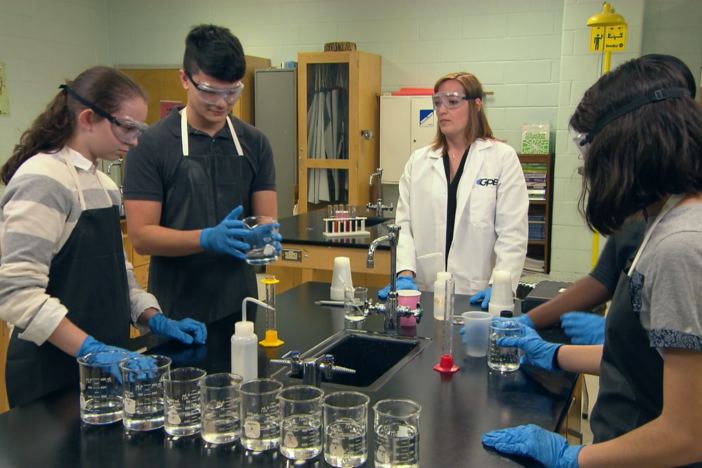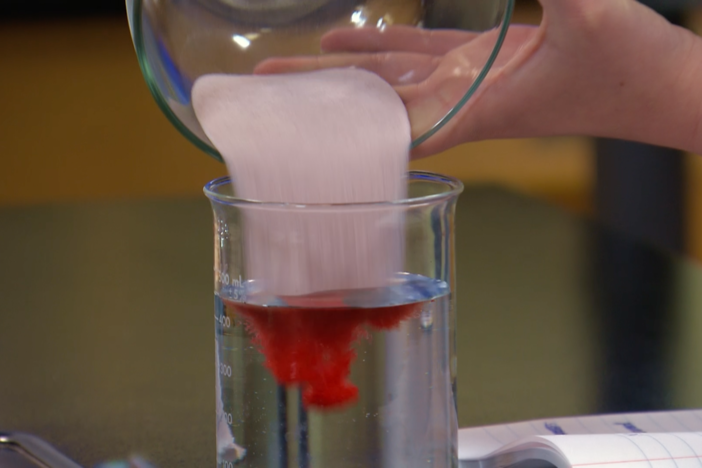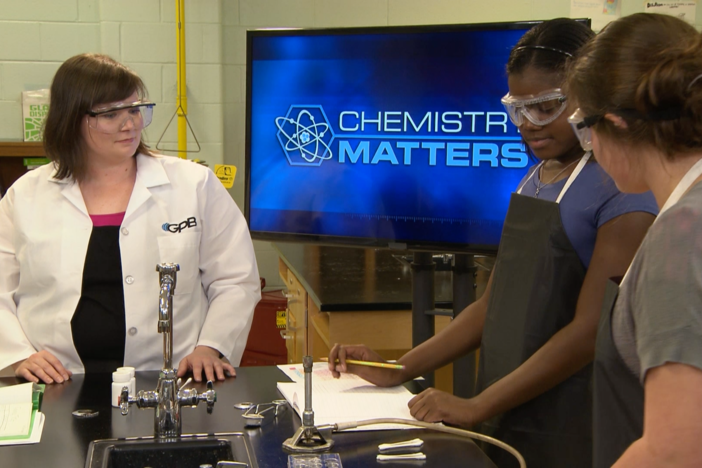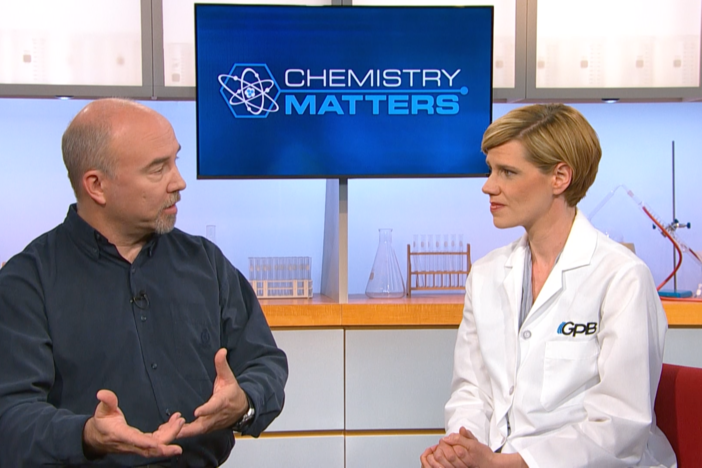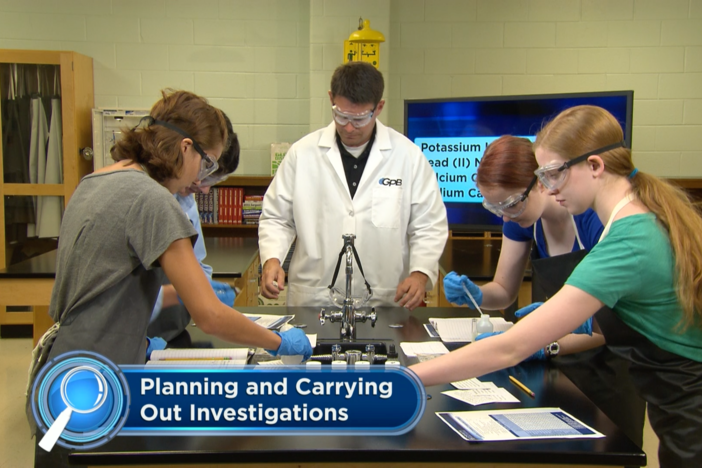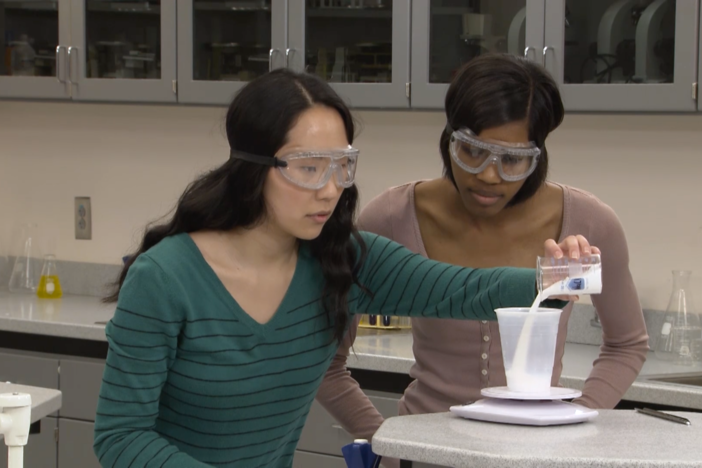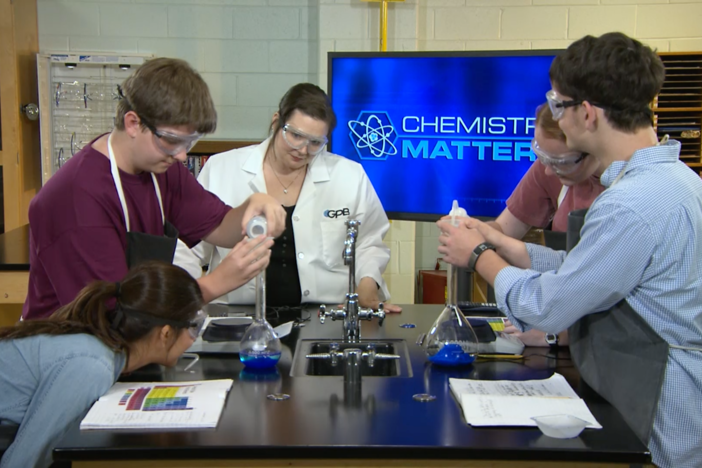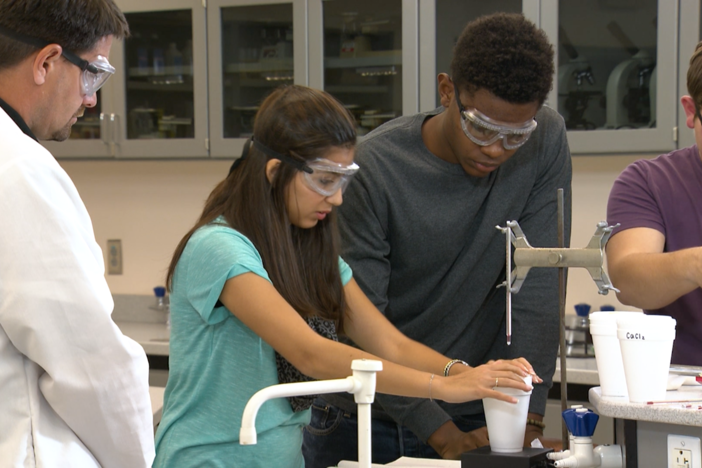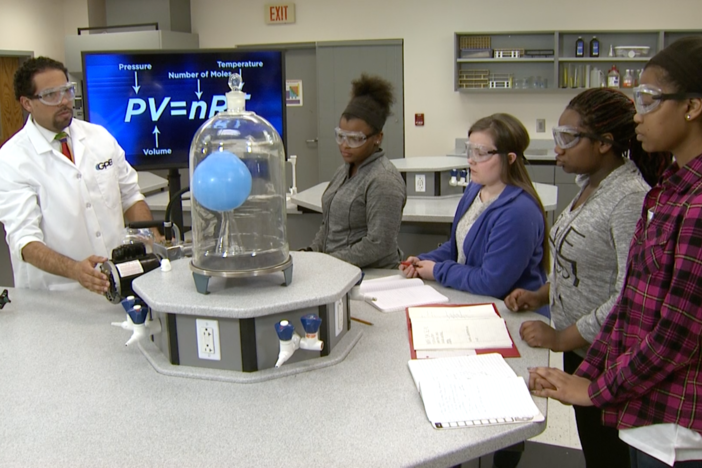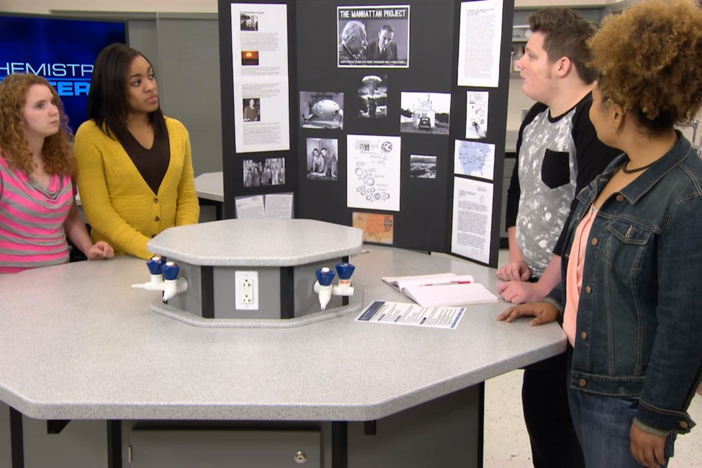Segment G: Solutions, Acids, and Bases Review
This segment reviews Unit 7, "Solutions, Acids and Bases." The students saw how solvents dissolve solutes and how the rate of dissolution can be changed. They measured the concentration of solutions by molarity, mass percent, and molality. Making ice cream gave the students a delicious way to see how the colligative property of freezing point depression works. The unit also covered pH scale and how to measure acidity and alkalinity.
Segment G: Solutions, Acids, and Bases Review
This segment reviews Unit 7, "Solutions, Acids and Bases." The students saw how solvents dissolve solutes and how the rate of dissolution can be changed. They measured the concentration of solutions by molarity, mass percent, and molality. Making ice cream gave the students a delicious way to see how the colligative property of freezing point depression works. The unit also covered pH scale and how to measure acidity and alkalinity.
Science
Obtain, evaluate, and communicate information about the chemical and physical properties of matter resulting from the ability of atoms to form bonds.
Ask questions about chemical names to identify patterns in IUPAC nomenclature in order to predict chemical names for ionic (binary and ternary), acidic, and inorganic covalent compounds.
Obtain, evaluate, and communicate information about the properties that describe solutions and the nature of acids and bases.
Develop a model to illustrate the process of dissolving in terms of solvation versus dissociation.
Plan and carry out an investigation to evaluate the factors that affect the rate at which a solute dissolves in a specific solvent.
Use mathematics and computational thinking to evaluate commercial products in terms of their concentrations (i.e., molarity and percent by mass).
Communicate scientific and technical information on how to prepare and properly label solutions of specified molar concentration.
Develop and use a model to explain the effects of a solute on boiling point and freezing point.
Use mathematics and computational thinking to compare, contrast, and evaluate the nature of acids and bases in terms of percent dissociation, hydronium ion concentration, and pH.
Ask questions to evaluate merits and limitations of the Arrhenius and Bronsted-Lowry models of acid and bases.
Plan and carry out an investigation to explore acid-base neutralization.
Obtain, evaluate, and communicate information to explain the properties of solutions.
Develop and use models to explain the properties (solute/solvent, conductivity, and concentration) of solutions.
Plan and carry out investigations to determine how temperature, surface area, and agitation affect the rate solutes dissolve in a specific solvent.
Analyze and interpret data from a solubility curve to determine the effect of temperature on solubility.
Obtain and communicate information to explain the relationship between the structure and properties (e.g., pH, and color change in the presence of an indicator) of acids and bases.
Plan and carry out investigations to detect patterns in order to classify common household substances as acidic, basic, or neutral.
The Chemistry Matters teacher toolkit provides instructions and answer keys for labs, experiments, and assignments for all 12 units of study. GPB offers the teacher toolkit at no cost to Georgia educators. Complete and submit this form to request the teacher toolkit. You only need to submit this form one time to get materials for all 12 units of study.
